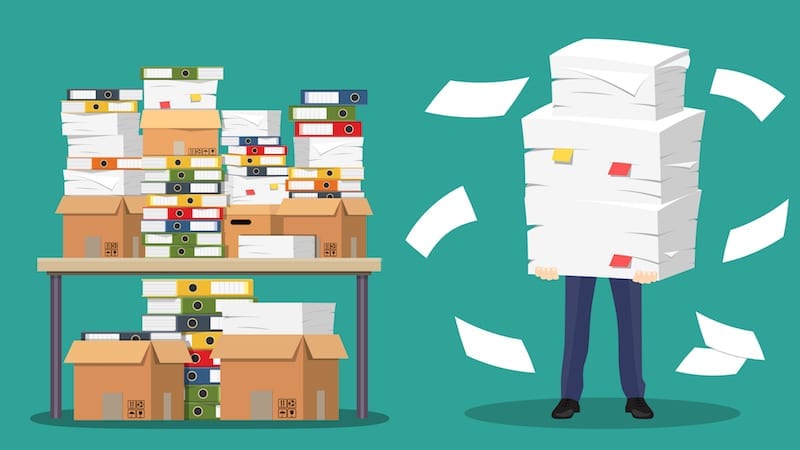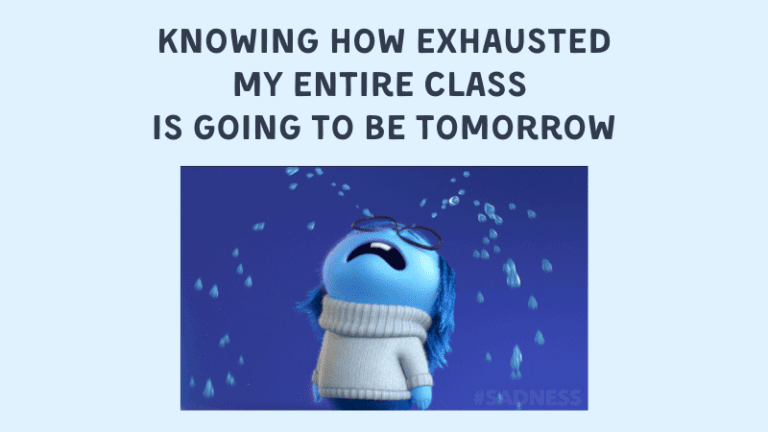By now, you’ve probably heard about all the benefits of going paperless: It saves money, frees up time for your staff, and is good for the environment. It sounds really great on paper (see what I did there?). But tell that to my math teachers who go through several reams a day. Or try telling my English teachers they will have their students read short stories from laptops from now on. Ending or limiting your use of paper at school can be a challenge, but it is a worthwhile one. Consider these six tips when going paperless at your school.
1. Set the tone for your school.

A requirement for going paperless is embracing technology. Whether your district uses Chromebooks, iPads, Google Drive, Dropbox, or any of the other useful tools out there, you have to adopt at least a few of these technologies—and a new mindset. In essence, the mindset that you bring to the table is an important communication tool for the rest of your staff. Sure, you might get some pushback from staff members, and it’s important that you listen to their concerns, but remember that your attitude will set the tone for this initiative. Along the same lines, encourage your staff members to adopt a similar mentality in the classroom. Elisabeth Mooring, a teacher at Oakland Technical High School, says, “By modeling for your students your ability to incorporate new technology into your classroom in stride, you make the process easier for them to mimic.”
2. Remember that one size doesn’t always fit all.

Your school’s needs are unique, and each classroom’s needs are unique as well. Instead of a blanket, one-size-fits-all approach to going paperless, think hard about what’s feasible. If you can’t get rid of paper entirely, consider areas where technology can make the biggest difference. For example, can you use technology to streamline a school-wide process, such as purchase orders (which is exactly what Benjamin School District 25 in West Chicago, Illinois, did)? Or can you encourage teachers to provide online activities for students who finish their work early, rather than making tons of copies of worksheets? This concerted effort can make a huge dent in the school’s paper budget as well as make a positive impact on the environment.
3. Encourage and invite collaboration.

Encourage your staff to share their ideas and collaborate with you and with each another on your paperless initiative. They’re on the front lines of instruction and will understand the day-to-day victories and challenges of using technology. Your staff likely will have some incredible ideas for how to move forward. Lean heavily on these experts, and you’re likely to get more buy-in and better ideas than if you try to execute your paperless initiative on your own.
Collaboration can also help save time. There’s no need to reinvent the wheel if a teacher can simply share a Google Doc she’s already created. (Plus, there are tons of awesome resources online from other teachers and schools who have gone paperless.) The hashtag #PaperlessClassroom on Twitter and Instagram can offer a glimpse of what other educators are doing to use less paper and rely more heavily on technology.
4. Advocate to go paperless with district administration.

Change will be difficult in some areas unless you can get buy-in from the very top. Be an advocate for change in your district so that top-level administrators will adjust their budget priorities and adopt wide-scale changes. District leaders need to write and implement new policies related to the use of specific technologies.
For example, Sequoia Union High School District in the San Francisco area recently switched over to DocuSign for all teacher evaluations. Instead of printing multiple forms for 250 instructors three times a year, the district saved paper and time by completing and signing the evaluations digitally. “Teachers and administrators are very appreciative of going through a more digital process instead of having endless papers and copies and trying to keep all of that file management straight,” said Bob Fishtrom, the district’s director of instructional technology. Recognize that you can create change by implementing small changes at your school as well as by calling for broader district-wide transitions at the same time.
5. Remember to be accessible to all staff and students.

The push to go paperless is exciting and progressive. But don’t get so swept up in a paperless initiative that you forget about the needs of students with disabilities. It’s important for all students to have equal access, and in fact, federal law requires it. Seattle Public Schools, for example, recently settled a lawsuit filed by the blind parent of a student and the National Federation of the Blind regarding the accessibility of its website and other online resources.
Consult with your district’s disability coordinator, legal counsel, risk manager, or policy specialist. It’s important to ensure that any changes you make are compliant with applicable rules and regulations. Going paperless is great, but you might need to make certain accommodations
6. Go paperless with all communications.

An easy place to start on your quest to go paperless is to digitize all of your school’s communication. Consider sending an email newsletter and creating digital report cards. Why waste precious time and paper sending both in the mail? As a benefit, digitized communication can also improve your connection with parents. Kerry Gallagher, assistant principal for teaching and learning at St. John’s Prep in Danvers, Massachusetts, says these small changes can actually encourage dialogue between parents and school staffers, rather than acting as simply a one-way communication channel.
Like any other major transition in school, eliminating the use of paper can be challenging. However, the budget savings and positive impact on the environment make going paperless worthwhile. So keep those benefits in mind as you encourage your colleagues and community to use less paper.
Join the great conversations going on about school leadership in our Facebook groups at Principal Life and High School Principal Life.
Plus check out how technology can improve student-teacher relationships.

